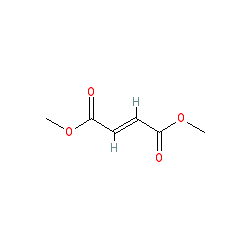|
Synonyms: BG-12 | BG00012 | fumaric acid | Tecfidera®
dimethyl fumarate is an approved drug (FDA (2013), EMA (2014))
Compound class:
Synthetic organic
Comment: The active metabolite of dimethyl fumarate is monomethyl fumarate.

View more information in the IUPHAR Pharmacology Education Project: dimethyl fumarate |
|
|||||||||||||||||||||||||||||||||||
| No information available. |
Mechanism Of Action and Pharmacodynamic Effects  |
| Although the exact mechanism of action of dimethyl fumarate (DMF) is poorly understood, it is believed that the benefits of using this drug are likely to be due to the anti-inflammatory and cytoprotective actions of its active metabolite. This activity is potentially due to inhibition of KEAP1 (Kelch-like ECH-associated protein 1 inhibitor) regulation of Nrf2 signalling of the antioxidant response when cells experience oxidative stress [5]. A study by Kornberg et al. (2018) shows that DMF (and its active metabolite monomethyl fumarate) inactivates the catalytic activity of the glycolytic enzyme glyceraldehyde 3-phosphate dehydrogenase (GAPDH) and thereby inhibits aerobic glycolysis in activated immune cells (which switch their primary metabolic pathway to aerobic glycolysis upon activation, and become reliant on this source of energy). The authors conclude that it is primarily this action, which mediates a shift from an inflammatory phenotype to a regulatory phenotype, that brings about the anti-inflammatory effects of DMF [3]. Notably DMF's effects on both KEAP1 and GAPDH are attributable to its cysteine succination ability [1,6]. Other inhibitors of glycolysis, such as metformin, and inhibitors of glutamine metabolism are also being examined for anti-inflammatory effects in immune mediated diseases [4,7]. |
External links  |
|
For extended ADME data see the following: Electronic Medicines Compendium (eMC) Drugs.com European Medicines Agency (EMA) |









